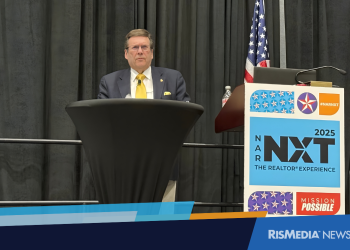 The Federal Housing Administration’s (FHA) rehabilitation loan program, commonly known as 203(k), can be a valuable tool to help deal with the REO problems faced by communities across the nation. The program works by providing the buyer with funding to purchase a property and rehabilitate it through one program. Essentially, one borrows money that exceeds the purchase price based on the agreement that certain improvements will be made that will add to the value of the property. For example, one buys a house with a price of $100,000 and agrees to make $40,000 in improvements. They get a 203(k) loan for $135,000 and use the extra money to make the improvements that will increase the value of the house. While there are a number of other requirements, that is the basic idea, and the program has already been used successfully across the nation. The problem is that HUD has been reluctant to reinstate the program for investors.
The Federal Housing Administration’s (FHA) rehabilitation loan program, commonly known as 203(k), can be a valuable tool to help deal with the REO problems faced by communities across the nation. The program works by providing the buyer with funding to purchase a property and rehabilitate it through one program. Essentially, one borrows money that exceeds the purchase price based on the agreement that certain improvements will be made that will add to the value of the property. For example, one buys a house with a price of $100,000 and agrees to make $40,000 in improvements. They get a 203(k) loan for $135,000 and use the extra money to make the improvements that will increase the value of the house. While there are a number of other requirements, that is the basic idea, and the program has already been used successfully across the nation. The problem is that HUD has been reluctant to reinstate the program for investors.
In the late 1990s, the program was suspended for investors because of a scandal in New York City and was never reinstated. However, it is time for FHA to bring back 203(k) for investors. There have been great improvements in technology and the ability to track and oversee these loans. More importantly, this is a tried and tested tool to help communities deal with dilapidated homes one property at a time.
Over the past several years, it has become clear that there is no “silver bullet” to dealing with the housing crisis, yet some are still searching. The latest idea put forth by the Federal Reserve is a rather complex suggestion to essentially sell REOs in bulk so they can be rented out on the theory that this would help address a shortage in rental housing. Needless to say, there are countless shortcomings to this proposal. First, each market is different, so merely identifying a group of properties in a market doesn’t mean a bulk sale is going to provide adequate return or even meet the needs of that market. Second, each property is different. One property might be suitable for a rental and another might be better for a sale. Third, how does one price the bulk sale to ensure investor demand through a foreseeable return?
A better answer is to focus less on what can be done in grand fashion and more on what can be done by communities and individuals to meet the challenges in their own neighborhoods. They are truly best positioned to make this determination. Along with other locally focused efforts and restoring reasonable standards for credit, restoring 203(k) for investors can provide a powerful tool to address problem housing one home and one neighborhood at a time.
A local investor—say, for example, a contractor whose crews have lost work due to the lack of new construction—could use a 203(k) loan to purchase a dilapidated home or two in a given neighborhood and restore it to the standards of other homes in the neighborhood. It could then be resold at a price commensurate with the other homes for a reasonable profit. The net result would be an improved home, improved property values, work for the contractor’s crew and others, and one or two fewer homes on the REO list, all without any taxpayer expense.
The 203(k) loan provides the otherwise unavailable capital; local people in their communities provide the rest. In the beginning of the housing and mortgage crisis, it seemed reasonable to try quick fixes. At this point, it is time to look at the many little things we can do to keep people in their homes and provide foreclosure alternatives and tools for dealing with those homes we weren’t able to save from foreclosure. 203(k) for investors should be put back in the tool belt so we can put those homes back together and put people back to work.
This column is brought to you by the NAR Real Estate Services group.
Ken Trepeta is the director of Real Estate Services for the National Association of REALTORS®.










